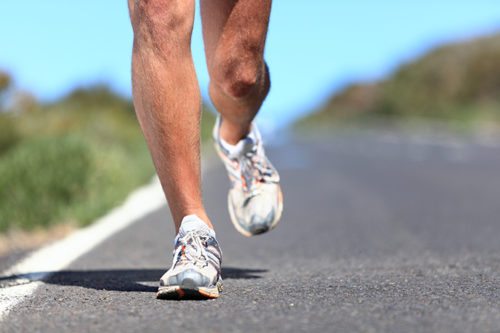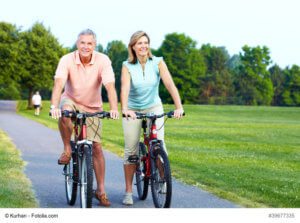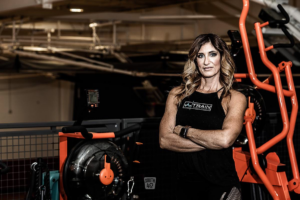Are there workouts for veins that can prevent vein disease? Well, there are so many reasons why you develop varicose and spider veins. In fact, your genes may be upping your risk! Even so, you can be proactive about prevention. And part of those changes include exercising more.
Now, even a few simple lifestyle changes go a long way towards preventing these veins from developing. Whether you are starting to see the early signs of varicose or spider veins, or you hope to prevent them altogether, certain workouts can promote healthy veins. Why not make these last weeks of 2021 your time to sweat some vein-preventing workouts (and show off those healthy legs with pride!) We've even tapped a top fitness trainer for work-out-at-home safety tips, in case you're too busy to get to the gym!

Taking a walk or hike is one of the best ways to give your legs a workout and improve circulation in your legs. Walking is a great low-impact exercise that can strengthen your calf muscles and minimize spider or varicose veins.
Try talking a stroll through your neighborhood, find a nearby greenway to walk on, or plan a hike. If you’re wanting a more rigorous workout, a run will also improve circulation and get more blood returning to your heart, which can help prevent varicose veins.
Ride your bike to smoother legs

Riding a bike is another exercise that works out your legs and promotes healthy veins. Bonus? It doesn't put too much stress on your joints, and as you pedal, your calf muscles flex, giving your veins a rest and helping circulate blood back to the heart.
You can ride a stationary bike or a regular bike. Don't have access to either? No problem! You can still mimic this exercise motion, while lying on your back on the floor, a bed or any flat surface. To get all the same benefits as biking, just raise your legs and pretend that you are pedaling. This will still stimulate blood circulation in your legs and help protect your veins.
Try Swimming or Water Workouts for Veins
The buoyancy of water means that swimming and water aerobics don’t put stress on your joints while still providing cardiovascular benefits. The water resistance will also help workout your leg muscles even more and improve circulation.
If you have a pool, try swimming lap. Or seek out a secluded lake or beach where you can take a socially responsible dip in the water.
Squats and calf raises both strengthen your leg and thigh muscles. Now, that's important. Because strong leg muscle produce strong contractions. And strong contractions help get blood out of your legs and back up to your heart. Which means no blood pooling, and a lower risk of varicose veins.
Of course, position is important with these exercises. See out in-depth guide to calf raises here. Then, think about these elements when squatting. Keep weight in your heels. Push your glutes back instead of down, and try to keep your head and chest lifted as you lower your body. In fact, since doing squats improperly can cause pain, it's best to check your form with a trainer or even your doctor to prevent injury.
Risk factors that increase your chance of suffering from vein disease include:
If any of these apply, you'll want to get started on a vein-healthy workout routine. Make sure to discuss any changes in your activity routine with a doctor before starting a new exercise program! And check out these safety tips for working out at home!

With so much time on our hands, but very few gym spaces available, we're taking workouts to our living rooms, back yards and neighborhood streets. And this is all great, as long as you stay safe. To help protect your health, certified personal trainer Anita Slaughter, owner of A | TRAIN FITNESS, shares her top safety tips for at-home workouts! And feel free to reach out and train with Anita from home. She offers virtual training and Zoom fitness!
1. While exercise has numerous health benefits, if you weren’t exercising regularly before the stay at home mandate, you should ease into a fitness program and slowly increase the frequency, duration and intensity.
2. It is important to add variety to the fitness program you choose. Working the same muscle groups, the same way, day after day can lead to overuse/repetitive injuries, so mix it up. Participate in lower body strength training one day, upper body the next and core the following. Throw cardio exercise in the mix, with walks or runs outside for the added Vitamin D benefit.
3. Without the normal day to day movement we’re getting, even from our homes to our cars, we are far more sedentary right now than we even realize. So if you don’t have a 45-60 minute block of time, break it up into two to three 15-30 minute segments each day.
4. If you have underlying health issues (like vein disease) or you’re concerned about safety, consult a professional. Telehealth is now available if you need to get clearance from a physician or vein specialist. There are numerous web options for exercise programs so find one that fits your needs and investigate to ensure they’re provided by a professional who is certified by a Nationally Accredited organization.

Scheduling
Please contact our dedicated specialists to schedule a consultation today.
2025 Texas Endovascular. All rights reserved. Website Design by Healthcare Success